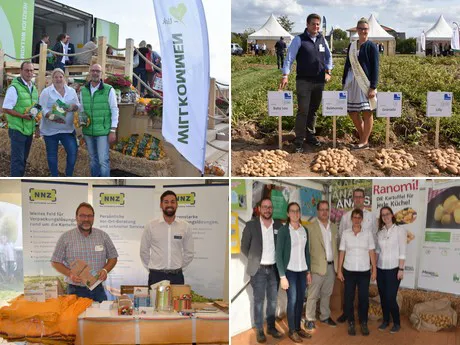The supply situation will be the big theme of this year's season, said Ferdi Buffen, CEO of the company Weuthen and host of the day. A historically paltry crop is expected throughout the HAFPAL area. Only parts of southern Germany, Austria, Poland and south-eastern Europe saw reasonably normal growth.

In numbers, the entire main crop is predicted as follows:
Germany: 8.25 - 8.75 million tons
EU 5: 20.00 - 22.00 million tons
This would mean that the German potato industry has about 2 million tons less raw material available than on average in recent years, and for the HAFPAL belt, this number is 6 to 7 million tons.
The seed suppliers gathered on an independent field and presented a colourful and versatile exhibition that day. The current selection of varieties in the potato industry knows two noteworthy trends: On the one hand, people are constantly looking for modern varieties with a high resistance and a high yield per hectare. This is the case for all product groups in the potato sector (food, chips and potato chips). This trend is closely related to the steady growth of organic potatoes. This product group is experiencing strong growth in Germany at the moment.
On the other hand, the German market has a strong preference for yellow varieties, say the seed suppliers. This also affects all three product groups and is regarded as a trend that will continue in the coming years. In the course of this development, however, there is also room for various premium varieties such as the red flesh varieties. However, this category of goods is primarily referred to as a niche market, with a limited market share. As a result, there is a general expectation that this segment will tend to remain at the same level in the coming years.
What is the potato market without suitable storage and processing techniques? This stage in the value chain certainly received commensurate attention at the Weuthen Potato Day. Suppliers of sorting and packaging machines had their stands, but this was also the case for manufacturers of wooden crates. This last storage technology is still gaining in importance over the outflow on the ground, as the boxes lead to few losses and thus to higher returns. Since the boxes can also be stacked on top of each other, storage space is fully utilized, ensuring optimum efficiency.
